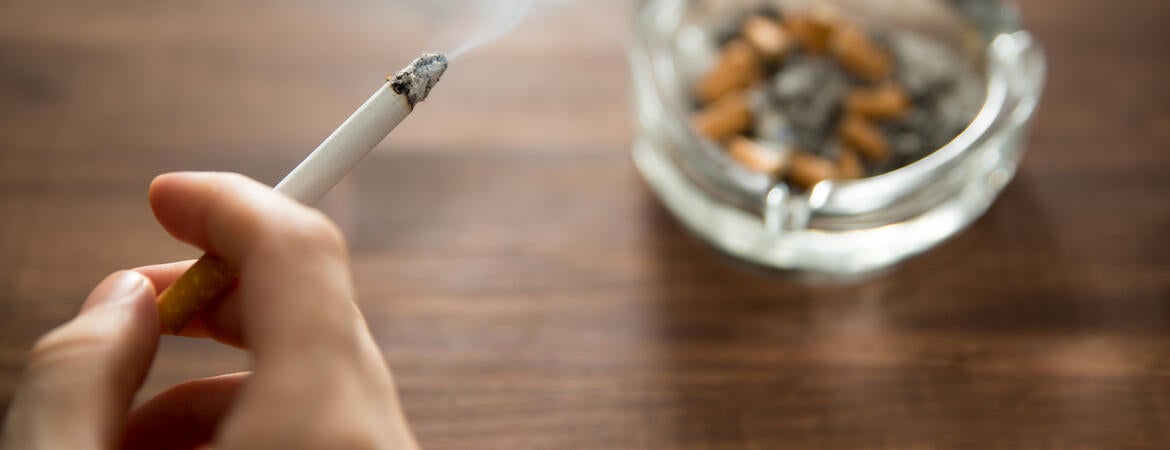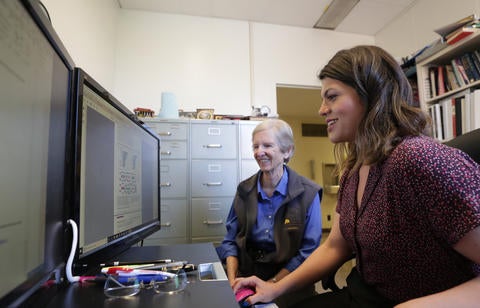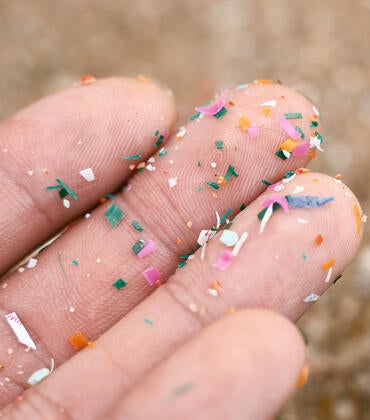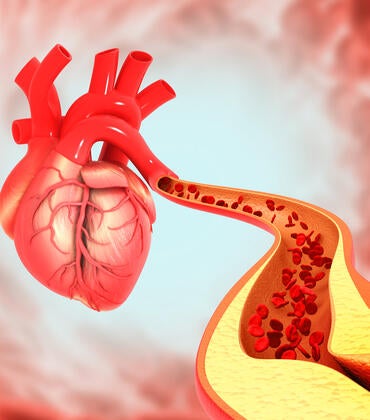
A University of California, Riverside, study has found that dermal exposure to nicotine concentrations found in thirdhand smoke, or THS, and electronic cigarette spills may damage the skin.
THS, of which nicotine is a major component, is created when exhaled smoke and smoke emanating from the tip of burning cigarettes settles on surfaces such as clothing, hair, furniture, and cars. Not strictly smoke, THS refers to the residues left behind by smoking. Electronic cigarette spills are e-liquid spills that may occur by leaky electronic cigarette products or when consumers and vendors mix e-liquids for refillable electronic cigarettes.
Study results appear in Atmosphere, a journal.
“We found dermal contact with nicotine may impair wound healing, increase susceptibility to skin infections due to a decrease in immune response, and cause oxidative stress in skin cells,” said Giovanna Pozuelos, who graduated earlier this year from UC Riverside with a doctoral degree in cell, molecular, and developmental biology.
The study was performed using EpiDermTM, a 3D model of the human epidermis, and cultured human keratinocytes. Keratinocytes are epidermal cells that produce keratin, the protein found in hair and fingernails. The researchers exposed EpiDermTM for 24 hours to different nicotine concentrations typically found in THS environments and electronic cigarette spills. The researchers then proceeded to identify processes and pathways altered by the exposure. They investigated nicotine’s effect on cellular organelles, mitochondria, and peroxisomes — organelles containing enzymes involved in many metabolic reactions.
According to Pozuelos, the most susceptible individuals include those with skin conditions such as diabetic-related ulcers or arterial ulcers.
“Dermal contact with nicotine residue may impair wound healing of such skin lesions and increase susceptibility to pathogenic skin infections,” she said. “Toddlers and infants, who tend to crawl on contaminated surfaces or have frequent contact with indoor surfaces, are particularly susceptible to high dermal exposure. Employers who work in heavily THS-contaminated environments, such as casinos where indoor smoking is permitted, can be exposed for months or even years.”
Fortunately, the changes in the mitochondria of human keratinocytes exposed to nicotine for 24 hours are reversible.
“Skin may recover by avoiding continual dermal exposure to THS-contaminated environments and properly handling electronic cigarettes e-liquid,” said coauthor Prue Talbot, a professor of cell biology who advised Pozuelos on the study. “It’s important to note that a relatively short exposure – 24 hours in our study — is sufficient to cause skin damage.”
Pozuelos stressed that the severity of skin damage depends on both exposure duration and nicotine concentration.
“Both THS and electronic cigarette spills and leaks can be damaging,” she said. “THS exposure may be chronic for someone living in a THS-contaminated household, which can lead to persistent dermal exposure. Vendors and consumers who handle or use electronic cigarettes that contain high nicotine concentrations could also become highly exposed.”
Pozuelos advises consumers and vendors dealing with electronic cigarettes to minimize dermal contact by wearing adequate protective gear and properly cleaning contaminated areas.
“Restrictions on indoor smoking and vaping, and policies for remediating contaminated environments need to be implemented,” she said.
The study was funded by the UC Tobacco-Related Disease Research Program and the UCR Academic Senate. The funders played no role in the study design, data collection and analysis, decision to publish, or preparation of the manuscript.
Pozuelos and Talbot were joined in the study by Matine Rubin, Samantha Vargas, Erik Ramirez, Dhiresh Bandaru, and Jihui Sha at UCR; and James Wohlschlegel at UCLA.
The research paper is titled “Nicotine Affects Multiple Biological Processes in EpiDermTM Organotypic Tissues and Keratinocyte Monolayers.”
Header image credit: Altayb/iStock/Getty Images Plus.





